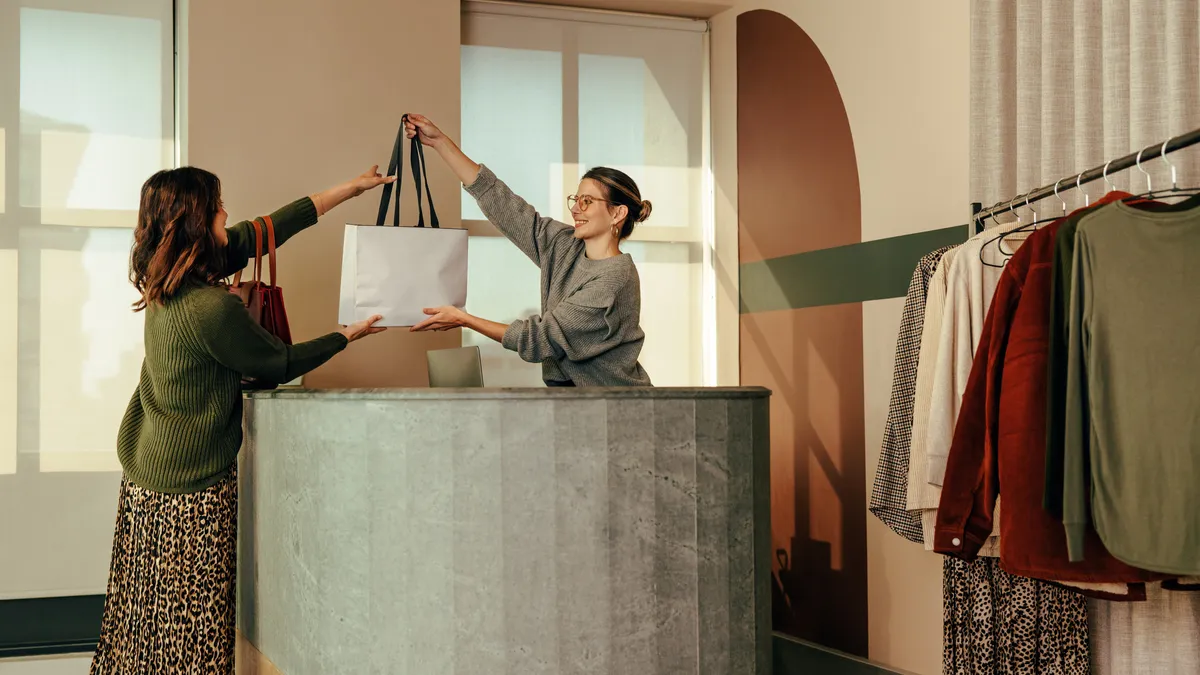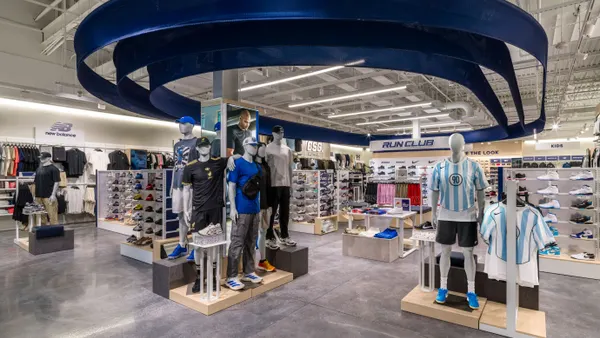If the last few years have taught retailers anything, it’s how to remain resilient in a disruptive economic environment. The path forward will not be simple, but our goal at Google is to help retailers and brands navigate uncertainty. As part of this, we partnered with Kantar and Bain to analyze shopper behavior and identified four critical trends that will shape the retail industry over the next three to five years.
Shopping has become an ambient experience
Today’s consumers move across digital, physical, virtual, and social platforms while seamlessly switching from browsing, researching, and buying. This omnichannel shopping behavior will continue to evolve as it shifts from a discrete task, in which people look for a specific item on a particular channel in a defined period, to an ambient experience. People will discover new products and services while scrolling through social feeds, watching streaming videos, and playing video games. This will make the next phase of commerce less about people choosing which channel to engage with and more about how close retailers can get to consumers and the places where they spend their time — places where demand, discovery, choice, and consumption happen.
Retailers, then, should consider how they want to appear when the lines between commerce and content further blur. Experiences powered by augmented reality and virtual reality, along with shoppable videos, will become more prominent as consumers’ appetite for tech-enabled shopping experiences grows. Younger shoppers are currently the highest adopters: They are 2X to 3X as likely to have shopped using emerging media, like social media, virtual try-on, and online live stream.1
The right customer and the right message will be a moving target. Marketers should rely more on AI to stay agile and adapt quickly to continued changes in channel touchpoints and content curation. Solutions like Performance Max campaigns that are powered by Google AI can help marketers maximize performance across all Google channels.
As brand loyalty fades, partnerships grow in value
Brand loyalty will take a back seat as shoppers choose companies and products that better align with their personal values and needs. Indeed, consumer expectations around personalization are increasing, with 73% of shoppers expecting brands to understand their unique needs and expectations.
Retailers and brands that want better odds at retaining customers should innovate their offerings through partnerships and collaborations. In fact, a host of intermediaries are already becoming significant players in the retail landscape. This includes super apps, like Rappi in Latin America or Grab in Southeast Asia, that centralize different customer needs in a single place, buy-now-pay-later financial providers like Affirm or Klarna, loyalty aggregators, social-media apps, and last-mile fulfillment providers. According to Allied Market Research, the global autonomous last-mile delivery market is projected to reach $90 billion by 2030. At the same time, online marketplaces will account for 45% to 50% of online spend by 2025. These numbers emphasize why retailers need to find the right partner who can help them differentiate themselves and provide customers with better shopping experiences.
Gen Z is the new shopping powerhouse
Gen Z is nearly 30% of the total global population, and it’s predicted that they’ll make up about 27% of the workforce by 2025. They’re also the first generation fully raised in a digital world, spending more time online than any other group. And their spending power is growing.
Retailers need to appeal to Gen Z’s specific habits and preferences, such as how they seek out input from trusted sources online. Gen Z and millennial consumers are twice as likely as older shoppers to state that watching an online video was their most influential shopping activity.2 Specifically, YouTube is more likely than other video and social media platforms to meet Gen Z’s top shopping needs, whether they’re making a quick decision for an impulse buy or need guidance and trustworthy information for a more considered purchase.3
Spend in physical stores

Source: Google/Bain, U.S., Future of Retail: U.S. Consumer Survey. 1
This digital behavior translates into more than just online purchases. Gen Z says 42% of their spend still occurs through physical stores, comparable to millennials (38% of spend).4 As a result, retailers will need to create more seamless omnichannel shopping experiences by leveraging in-store digital to enhance the experience, testing next-gen technology like shoppable videos, and getting real customer feedback.
Conscious consumers want more value and less risk
After years of macroeconomic and geopolitical uncertainty, shoppers have become more intentional about value. As a consequence, people are placing more importance on a retailer’s overall brand value proposition than on spending less money. In fact, at least 70% of people say they are willing to continue buying from companies that increase their prices if they feel valued as a customer.
Higher consumer expectations come with greater scrutiny over personal data. According to Kantar’s Global Monitor, 79% of global consumers say they are concerned about data protection and privacy on the internet, and 72% believe they are very or somewhat at risk from people or companies misusing their personal data.5
As personal identifiers like cookies and device IDs phase out and marketers adapt to an evolving regulatory environment, retailers and brands need a strong foundation of consented first-party data. Apps will be pivotal to building direct relationships with their customers, which can help with first-party data collection.
As uncertainty continues in an ever-changing retail environment, retailers and brands can stay agile and ready for the future by adapting to a more ambient shopping experience, forming the right partnerships to enhance their offerings, appealing to Gen Z shoppers, and offering consumers more value and less risk.
Sources
- Google/Bain, U.S., Future of Retail: U.S. Consumer Survey, among U.S. respondents ages 18+ who have made a purchase in the past six months, base: Gen Z N=385, millennials N=2,335, Gen X N=1,251, baby boomers and older N=1,815, Aug. 2022.
- Google/Bain, U.S., Future of Retail: U.S. Consumer Survey, among U.S. respondents ages 18+ who have made a purchase in the past six months, base: Gen Z and millennial shoppers N=2,720; Gen X, baby boomer, and older shoppers N=3,066, Aug. 2022.
-
Google/TalkShoppe, U.S., Social Commerce and Video Shopping study, n= 2,000 video viewers 18–64 [competitive set includes video (linear TV and ad-supported streaming services) and social media platforms (Instagram, Facebook, TikTok); Gen Z defined as 18–24; Gen Z says that YouTube is more likely than other video and social media platforms to meet their top shopping needs, including finding detailed information (49% vs. 16%), feeling well-informed (49% vs. 16%), finding honest information (48% vs. 17%), and not regretting their purchase (44% vs. 18%)], July 25, 2022–Aug. 3, 2022.
-
Google/Bain, U.S., Future of Retail: U.S. Consumer Survey, among U.S. respondents ages 18+ who have made a purchase in the past six months, base: Gen Z N=385, millennials N=2,335, Gen X N=1,251, baby boomers and older N=1,815, Aug. 2022.
-
Kantar, 2022 Global Monitor, AR, AU, BR, CA, CH, CO, DE, EG, ES, FR, HK, ID, IN, IT, JP, KR, MY, MX, NG, PH, PO, RO, RU, SE, SG, TH, TR, UK, US, VN, ZA, n= 40,000 consumers aged 13+, Jan. 2022–April 2022.
-
[alt text] A circle graph showing that 42% of Gen Z’s spending is in physical stores, next to a circle graph showing that 38% of millennials’ spending is in physical stores.










